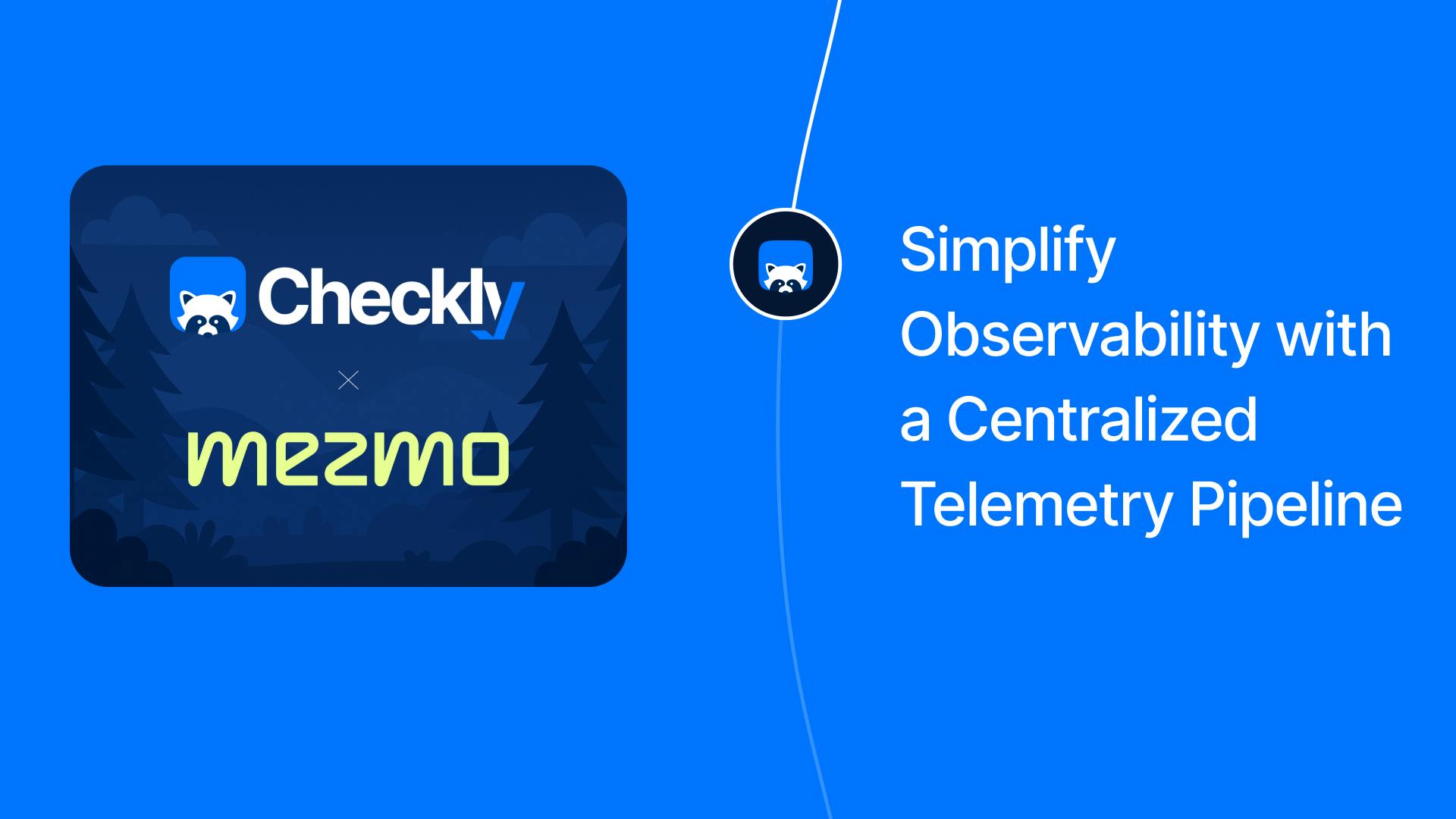Table of contents
Modern applications generate a deluge of telemetry data—logs, metrics, and traces—that hold the key to understanding system performance and reliability. However, managing this data effectively is a growing challenge for DevOps teams. Raw telemetry can overwhelm teams with complexity and noise even when collected via robust standards like OpenTelemetry.
In this post, we explore how a centralized telemetry pipeline simplifies data management compared to relying solely on OpenTelemetry agents, and how pairing it with proactive monitoring delivers faster, more cost-effective observability.
Making Your Telemetry Data Work Smarter
Collecting telemetry data with agents like OpenTelemetry is a great first step, but what happens next? The challenge for developers and SREs often becomes managing the sheer amount of data, making sense of it, and getting it where it needs to go without breaking the bank.
That's where a telemetry pipeline comes in. Think of it as a central point that takes the raw data from your agents and gets it ready before it goes into your analysis tools. It helps you handle large, diverse, and even messy data volumes. Here's how it helps you directly:
- Significant Cost Savings: Raw data volume is constantly growing, leading to unpredictable costs and overage charges. A pipeline minimizes the volume of data you have to store and index in expensive tools. By automatically eliminating redundant entries, filtering out irrelevant data like noisy debug logs, or using techniques like sampling, you can dramatically reduce the amount of data you pay for. Customers have seen data volume reductions between 40% and 60%, with profiling and optimization potentially leading to a 50% or more reduction in data volume, and even saving up to 70% of costs by reducing log volume. This helps you avoid unplanned cost spikes and manage your data bills.
- Data That's Actually Useful: Raw telemetry data, especially logs, can be complex to read and use. The pipeline transforms this data, making it easier to work with. This includes parsing logs into a structured format and adding context. It can even turn events and log messages into useful metrics, like counting errors or tracking activity, which is often difficult otherwise. This makes your data more valuable for analysis and troubleshooting.
- Automatic, Smart Data Delivery: Different teams and tools need access to telemetry data, often in different formats. The pipeline acts as a single control point to route data automatically to various destinations like observability platforms, storage, or analytics tools. You can set rules to send less critical data to cheaper storage options, ensuring the right data gets to the right place without manual effort.
- Faster Problem Solving: When something goes wrong, you need to find the cause quickly. A pipeline helps you identify and resolve issues sooner by reducing noise, making data easier to search, and getting the relevant data to you faster. You can also use simulation to test how pipeline changes will affect your data before you deploy them, helping you get it right the first time.
In short, by implementing a telemetry pipeline, you're not just collecting data with agents—you're getting control and value from that data, reducing costs and speeding up your ability to respond to issues.
Mezmo and Checkly: A Streamlined Partnership
Pairing a telemetry pipeline with proactive monitoring creates a powerful observability workflow. Checkly’s synthetic monitoring proactively tests critical application workflows—such as API endpoints, login flows, or checkout processes—from multiple global locations. These checks generate telemetry data that, when processed through a pipeline like Mezmo’s, becomes more actionable and easier to manage.
For example, Checkly’s synthetic checks might detect a failing API call. Instead of flooding teams with raw OpenTelemetry traces, Mezmo’s pipeline filters out irrelevant data, enriches the trace with details like the affected endpoint or user action, and routes actionable signals back to Checkly or a concise alert to tools like Slack or PagerDuty. This integration streamlines observability by combining proactive issue detection with intelligent data processing.
Step-by-Step Benefits of a Telemetry Pipeline
Here’s how a telemetry pipeline enhances data from synthetic monitoring:
- Data Collection: Ingests logs, metrics, and traces from Checkly’s synthetic checks and other OpenTelemetry sources, consolidating them into a single stream.
- Noise Reduction: Applies real-time filters to eliminate low-priority data, such as expected latency during a deployment, reducing alert fatigue.
- Contextual Enrichment: Adds metadata, such as the geographic location of a failed check or the specific user flow affected, to make traces more actionable.
- Smart Alerting: Routes only high-priority alerts to incident management tools, ensuring teams focus on critical issues without distraction.
- Cost Efficiency: Aggregates and compresses data before sending it to downstream platforms, reducing storage and processing costs by up to 30%
This streamlined approach accelerates issue resolution, minimizes false positives, and optimizes observability budgets, all while leveraging the proactive insights from synthetic monitoring.
Getting Started: Integrate a Telemetry Pipeline with Proactive Monitoring
Setting up a telemetry pipeline to enhance proactive monitoring is quick and straightforward. Here’s a simple guide:
- Set Up Proactive Monitoring: Configure synthetic checks in Checkly to test critical application workflows, such as API calls or user journeys, across global regions.
- Export from OTEL to Mezmo: In Mezmo, create a pipeline to ingest telemetry data from Checkly’s checks. Use OpenTelemetry to capture traces and logs generated by these checks and configure OTEL to export directly to a Mezmo pipeline
- Define Processing Rules: Set filters to remove redundant data (e.g., non-critical logs) and enrich traces with relevant metadata, like service names or check locations.
- Route relevant traces back to Checkly: Based on those filters and rules, decide when to route the relevant traces back to Checkly by enabling their “import traces” switch and routing to the specific import URL destination.
- Configure Alerts: Route high-priority alerts to tools like PagerDuty or Rootly, suppressing low-priority notifications to reduce noise.
- Monitor and Refine: Use Mezmo’s data profiler to track telemetry trends and Checkly’s results to monitor application health. Adjust pipeline rules as needed to optimize performance.
Conclusion: Streamlined Telemetry for Better Observability
Managing telemetry data doesn’t have to be a battle against complexity. By integrating a centralized telemetry pipeline with proactive monitoring, teams can simplify data processing, reduce operational overhead, and focus on delivering reliable applications. Pairing Mezmo’s pipeline with Checkly’s synthetic checks empowers DevOps teams to catch issues early, resolve them quickly, and optimize observability costs.
To get started, explore Mezmo’s telemetry resources and Checkly’s monitoring guide. Together, these tools pave the way for smarter, more efficient observability.

